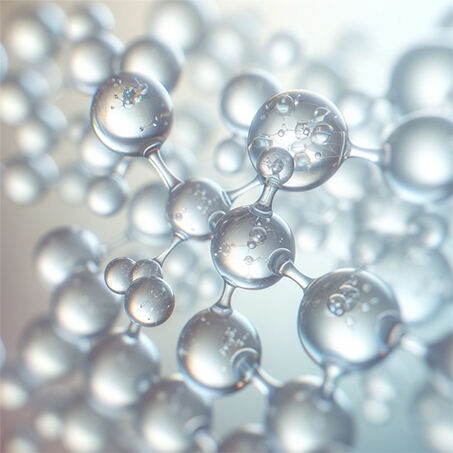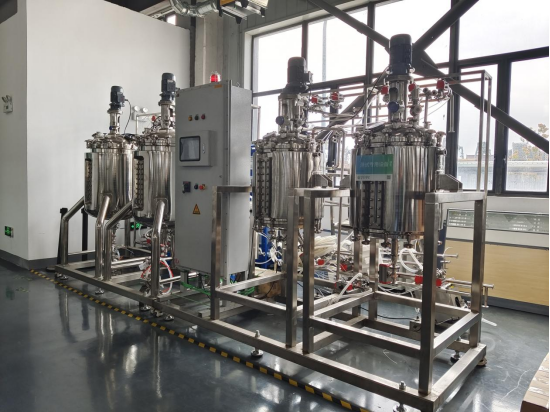To obtain peptides with specific amino acid sequences, we use the Fmoc-SPPS (solid-phase peptide synthesis) method. Background: Peptides are bioactive substances related to various cellular functions in biological organisms. Their molecular structur...
Share
To obtain peptides with specific amino acid sequences, we use the Fmoc-SPPS (solid-phase peptide synthesis) method.

Background:
Peptides are bioactive substances related to various cellular functions in biological organisms. Their molecular structure lies between amino acids and proteins, consisting of multiple amino acids arranged in a specific order and linked by peptide bonds (—NH—CO—). Compounds formed by the dehydration condensation of two amino acid molecules are called dipeptides, similarly, there are tripeptides, tetrapeptides, pentapeptides, and so on, up to nonapeptides. Compounds typically made from 10 to 100 amino acid molecules through dehydration condensation are called polypeptides.
Peptide custom services refer to the synthesis of peptides based on customer requirements, such as sequence, purity, molecular weight, and salt content, to meet specific needs. The molecular weight is confirmed by mass spectrometry to ensure the correctness of the crude MS, followed by purification using a high-performance liquid chromatography system, then concentration, and lyophilization to obtain the fine peptide powder.
To obtain peptides with specific amino acid sequences, we use the Fmoc-SPPS (solid-phase peptide synthesis) method. During solid-phase synthesis, a group capable of reacting with carboxylic groups is introduced on the solid-phase carrier to react with the amino-protected amino, anchoring the first amino acid to the resin. The reaction is then completed from the C-end to the N-end to complete the target peptide sequence synthesis.
Purification Methods:
Our company utilizes a high-performance liquid chromatography system with a reverse C18 preparatory column for separation and purification, following these steps:
Identification:Take a small amount of crude peptide for mass spectrometry to confirm the presence of the target peptide (if yes, confirm its retention time in the C18 column through analytical chromatography; if no, resynthesize the crude peptide).
Dissolution:Use ultrasonic assistance for dissolution, typically selecting 90% water + 10% acetonitrile (methanol or isopropanol). For difficult solubility, add appropriate acetic acid or trifluoroacetic acid to aid dissolution if the sequence has a higher proportion of basic amino acids; add appropriate ammonia water if acidic amino acids are predominant. Use DMSO (dimethyl sulfoxide) if hydrophobic amino acids are predominant.
Filtration:Filter the dissolved crude product through a 0.45 µm filter membrane (to protect the preparatory column) for later use.
Sample Loading:Use the high-performance liquid preparatory system to input the liquid sample into the preparatory column.
Elution:Based on the elution gradient determined in step 1), separate the impurities from peptides using the polarity differences of varying length peptides.
Advantages of using a high-performance liquid chromatography system:
Higher resolution than other chromatography methods; the C18 preparatory column used has high column efficiency, long service life, and good reproducibility, allowing for repeated use; fast speed and high efficiency, with each sample being purified within minutes or tens of minutes; wide application and mature technology of reverse-phase chromatography, offering good selectivity for various types of organic compounds.
Crude Peptide Purification and Lyophilization:
The crude peptide is separated and purified using a high-performance liquid chromatography preparatory system and analyzed for purity using a high-performance liquid chromatograph (HPLC) to obtain the qualified liquid components.
Rotary Evaporation System: The qualified liquid component is subjected to vacuum heating to remove easily volatile organic solvents, finally obtaining a solution containing the target peptide, which is then placed in a freezer to form solid ice crystals.
Freeze-Drying System: Containers holding the solid ice crystals are placed on the freeze-dryer tray or vacuum port. In a vacuum environment, the peptide product is sublimated, ultimately yielding solid peptide powder.
The peptide crystals are ready for freeze-drying in the freeze-dryer.